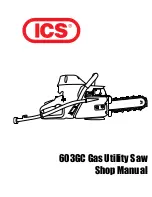
EN
32
10. Lock button for power switch
11. Hex key
12. Ventilation openings
13. Dust extractor adapter
14. Switch for sawdust
15. Move the switch forward to blow clean
the saw line, and back if dust extractor is
connected.
16. Bevel angle scale
17. Sole
18. Guide roller
19. Parallel fence
20. Saw blade for sawing wood
21. Saw blade for sawing metal
FIG. 1
USE
ASSEMBLY AND ADJUSTMENT
WARNING!
Switch off the product, pull out the plug, and
wait until all moving parts have completely
stopped before adjusting, maintenance and/
or replacing accessories.
Replacing saw blades
1. Open the blade holder lock (4B) by
moving it up towards the handle. Remove
the old saw blade.
2. Insert the new saw blade (1) all the way
into the blade holder (4). Check that the
back of the saw blade runs against the
guide roller (17).
3. Release the blade holder lock.
4. Pull on the saw blade to check that it is
firmly in place.
FIG. 2
NOTE:
The saw blade locks in place when the blade
holder lock is released.
Fitting the parallel fence
1. Undo the 2 locking screws (2B), but do
not remove them. Use the hex key (11), in
the holder on the cord.
2. Put the parallel fence (18) in the slot (2) in
the sole.
3. Adjust to the required width.
4. Tighten the locking screws.
5. Test on a spare piece to check the
adjustments for sawing the workpiece.
Adjust the parallel fence, if necessary.
FIG. 3
Adjusting the bevel angle of
the sole
The sole (6) can be adjusted up to 45° to the
right or left.
1. Undo the hex screw under the sole.
FIG. 4
2. Move the sole (6) forward and angle it
to the required angle. There are fixed
positions for -45°, 0° and 45°.
3. Tighten the hex screw.
4. Test on a spare piece to check the
adjustments for sawing the workpiece.
Adjust the angle, if necessary.
Do NOT pull the sole (6) back to adjust to an
angle other than the fixed positions. Set the
required bevel angle and tighten the locking
screws.
Setting the oscillation
The oscillation function can make the sawing
more effective. It can be adjusted to suit the
















































